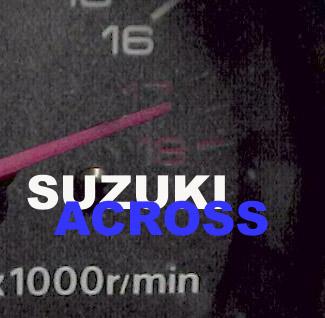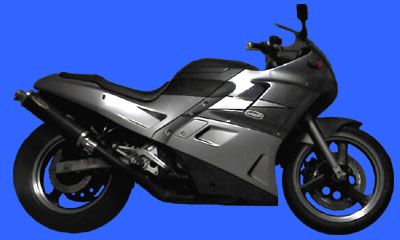|
Tip
from AMT
|
Bike
Setup : Wheel Alignment
|
All you'll ever need to know about keeping those wheels traveling in the
same direction,
from the pages of Australian Motorcycle Trader.
Now the drum here is that in an ideal world, both your bike wheels will,
when
travelling in a straight line, be heading in the same direction. If they're
not, the
machine is likely to be pulling to one side - or steering in one direction
easier than
the other. This makes the handling a bit ordinary and will reduce tyre
life.
According to the folk at Sharptune, and some others we spoke to, it's relatively
rare
for people to do a wheel alignment on newer bikes these days mostly because
the
production tolerances have improved over time and the bike is likely to
be pretty
straight.
This wasn't always the case. Machines built up to even the mid-eighties
were often
not straight out of the crate.
WHICH BIKES?
We'll talk mostly about chain/belt drive bikes with twin-sided swingarms
for this
exercise, as you can alter their alignment with the simple device of altering
the
position of the chain adjusters.
The position of shaft drive bikes tends to be fixed, although some models
(for
example early K-series Bimmers) will allow adjustment via hub shims.
As for single-sided swingarm bikes, they too generally have a fixed alignment,
which
should be okay so long as it hasn't been crashed heavily, and the swingarm
and
wheel bearings are in good nick.
If you have a squiz at your conventional chain-drive bike, you'll see the
back wheel's position can be altered
with the adjusters. Whenever you tension the chain or move the wheel for
any reason, you generally just line
it up against the alignment marks stamped on the swingarm. If the axle
is back three-and-half notches on one
side, you make sure it's back three-and-a-half on the other. Simple.
As we mentioned, this is probably fine for a late-model machine that hasn't
been decked. But if you're fussy,
you can double check it.
TRICKS
The trick is to get a ball of twine, or you can do this exercise if you
can somehow find two straight edges
that are longer than the bike. The latter is a big call, so we'll stick
with the string method - yep, this is ye
olde "stringlining", of which you may have heard your mates speak.
Usually this is easiest with the bike on the sidestand (the centrestand
usually gets in the way) and propped
up as close as possible to vertical. A race stand is often a good option.
Wrap the string around the front of the front wheel, as high as possible
without snagging fairings and
associated under-bike hardware when you run each end of the twine under
the machine. The pics will give
you the idea.
From there the plan is to get the front wheel straight, and then the rear
wheel adjusted so it is too. What you
want to end up with is what we've shown in the main diagram - where the
distances "A" (the gap between
the string and the edge of the tyre) and "B" (ditto) on the trailing edge
of the front wheel are equal to each
other; And the distances "A" and "B" on the trailing edge of the back wheel
are equal to each other. (Note:
the A/B up front does not have to match A/B on the back.)
This is often best done with two people, one working on each end of the
bike. It is a great help to have oil
cans/bricks/jackstands to hold the loose ends of the string for you while
you fiddle.
Getting it all lined up will be a bit of a fiddle, but simple enough assuming
the bike is straight. The exact
method isn't critical, so long as you end up with a result that looks like
our diagram.
If you cannot get them to align, it is likely the frame isn't straight,
or the bike might even have been designed
with the rear wheel offset from the front. (Chassis experts at Bob Martin
Engineering tell us that some BMW
GS models have an offset.)
STRAIGHT?
This is one of those rare occasions where being straight is universally
regarded as a fine thing. Having both
ends of the motorcycle talking to each other makes cornering more predictable
and makes for less wear and
tear.
If the bike is so far out of whack that you can't adjust it back, you need
to decide whether it's worth getting
fixed. We suggest an assessment from a frame expert, who should also be
able to quote on what needs to be
done to put things right.
Something worth knowing, though, is that a machine with shot wheel, steering
head and swingarm bearings
will be impossible to get right as each of them will alter alignment. So
make sure those basics are okay before
you attack the frame itself. Happy aligning...
Guy Allen
|

 Made
in Sydney, Australia
Made
in Sydney, Australia


